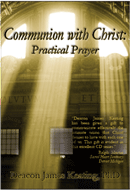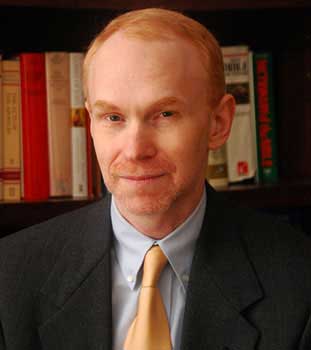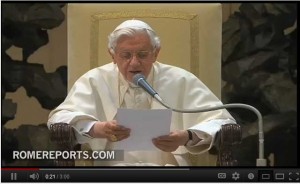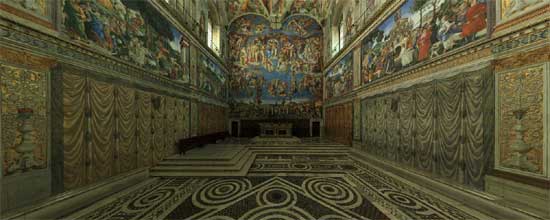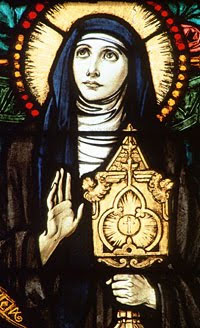Episode 1 – The School of Prayer: Reflections on the teachings of Pope Benedict XVI –  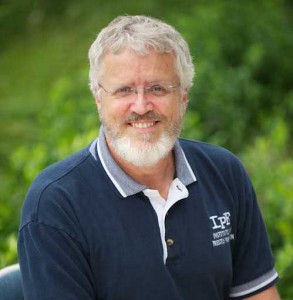  “Life without prayer has no meaning or points of reference”.  The relationship between the Father and the Son and the Holy Spirit  is so essential to our understanding of prayer.  The meaning of the Church.  Suffering the coming of the Holy Spirit.  Jesus is the face of God.  Do not be afraid, He will teach you happiness.
 “Life without prayer has no meaning or points of reference”.  The relationship between the Father and the Son and the Holy Spirit  is so essential to our understanding of prayer.  The meaning of the Church.  Suffering the coming of the Holy Spirit.  Jesus is the face of God.  Do not be afraid, He will teach you happiness.
[powerpress]
Deacon James Keating, PhD, the director of Theological Formation for the Institute for Priestly Formation, located at Creighton University, in Omaha.
From  Pope Benedict’s 1st audience on prayer:
Human life is a fabric woven of good and of evil, of undeserved suffering and of joy and beauty that spontaneously and irresistibly impel us to ask God for that light and that inner strength which support us on earth and reveal a hope beyond the boundaries of death.
In the examples of prayer of the various cultures which we have considered, we can see a testimony of the religious dimension and of the desire for God engraved on the heart of every human being, which receives fulfilment and full expression in the Old and in the New Testament. The Revelation, is in fact purifying and brings to its fullness man’s original yearning for God, offering to him, in prayer, the possibility of a deeper relationship with the heavenly Father.
At the beginning of our journey in the “school of prayer†let us now ask the Lord to illumine our minds and hearts so that the relationship with him in prayer may be ever more intense, affectionate and constant. Once again, let us say to him: “Lord, teach us to pray†(Lk 11:1).
For more information on the “Institute of Priestly Formation†and for other material available by Deacon Keating, just click here
Don’t forget to pickup a copy of “Communion with Christ†, it is one of the best audio sets on prayer…ever!
Check out Deacon Keating’s “Discerning Heart†page
Tags: beauty, catholic, catholic podcast, catholic prayer, cathollc spirituality, death, hope, suffering
This entry was posted on Tuesday, October 21st, 2014 at 8:24 am
You can follow any responses to this entry through the RSS 2.0 feed.
Dr. Matthew Bunson discusses the life, times and teachings of St. Augustine of Hippo (part 2)
[powerpress]
Augustine of Hippo [
-Â Confessions
-Â Letters
-Â City of God
-Â Christian Doctrine
-Â On the Holy Trinity
-Â The Enchiridion
-Â On the Catechising of the Uninstructed
-Â On Faith and the Creed
-Â Concerning Faith of Things Not Seen
-Â On the Profit of Believing
-Â On the Creed: A Sermon to Catechumens
-Â On Continence
-Â On the Good of Marriage
-Â On Holy Virginity
-Â On the Good of Widowhood
-Â On Lying
-Â To Consentius: Against Lying
-Â On the Work of Monks
-Â On Patience
-Â On Care to be Had For the Dead
-Â On the Morals of the Catholic Church
-Â On the Morals of the Manichaeans
-Â On Two Souls, Against the Manichaeans
-Â Acts or Disputation Against Fortunatus the Manichaean
-Â Against the Epistle of Manichaeus Called Fundamental
-Â Reply to Faustus the Manichaean
-Â Concerning the Nature of Good, Against the Manichaeans
-Â On Baptism, Against the Donatists
-Â Answer to Letters of Petilian, Bishop of Cirta
-Â Merits and Remission of Sin, and Infant Baptism
-Â On the Spirit and the Letter
-Â On Nature and Grace
-Â On Man’s Perfection in Righteousness
-Â On the Proceedings of Pelagius
-Â On the Grace of Christ, and on Original Sin
-Â On Marriage and Concupiscence
-Â On the Soul and its Origin
-Â Against Two Letters of the Pelagians
-Â On Grace and Free Will
-Â On Rebuke and Grace
-Â The Predestination of the Saints/Gift of Perseverance
-Â Our Lord’s Sermon on the Mount
-Â The Harmony of the Gospels
-Â Sermons on Selected Lessons of the New Testament
-Â Tractates on the Gospel of John
-Â Homilies on the First Epistle of John
-Â Soliloquies
-Â The Enarrations, or Expositions, on the Psalms
After his Baptism, Augustine decided to return to Africa with his friends, with the idea of living a community life of the monastic kind at the service of God. However, while awaiting their departure in Ostia, his mother fell ill unexpectedly and died shortly afterwards, breaking her son’s heart. Having returned to his
homeland at last, the convert settled in Hippo for the very purpose of founding a monastery. In this city on the African coast he was ordained a priest in 391, despite his reticence, and with a few companions began the monastic life which had long been in his mind, dividing his time between prayer, study and preaching. All he wanted was to be at the service of the truth. He did not feel he had a vocation to pastoral life but realized later that God was calling him to be a pastor among others and thus to offer people the gift of the truth. He was ordained a Bishop in Hippo four years later, in 395. Augustine continued to deepen his study of Scripture and of the texts of the Christian tradition and was an exemplary Bishop in his tireless pastoral commitment: he preached several times a week to his faithful, supported the poor and orphans, supervised the formation of the clergy and the organization of mens’ and womens’ monasteries. In short, the former rhetorician asserted himself as one of the most important exponents of Christianity of that time. He was very active in the government of his Diocese – with remarkable, even civil, implications – in the more than 35 years of his Episcopate, and the Bishop of Hippo actually exercised a vast influence in his guidance of the Catholic Church in Roman Africa and, more generally, in the Christianity of his time, coping with religious tendencies and tenacious, disruptive heresies such as Manichaeism, Donatism and Pelagianism, which endangered the Christian faith in the one God, rich in mercy.
And Augustine entrusted himself to God every day until the very end of his life: smitten by fever, while for almost three months his Hippo was being besieged by vandal invaders, the Bishop – his friend Possidius recounts in his Vita Augustini - asked that the penitential psalms be transcribed in large characters, “and that the sheets be attached to the wall, so that while he was bedridden during his illness he could see and read them and he shed constant hot tears” (31, 2). This is how Augustine spent the last days of his life. He died on 28 August 430, when he was not yet 76. We will devote our next encounters to his work, his message and his inner experience.
For more visit Vatican.va
Dr. Matthew Bunson, Senior Fellow of the St. Paul Center for Biblical Theology, is one of the United States’ leading authorities on the papacy and the Church.
His books include: The Encyclopedia of Catholic History; The Encyclopedia of Saints; Papal Wisdom; All Shall Be Well; Encyclopedia of the Roman Empire; and The Angelic Doctor: The Life and World of St. Thomas Aquinas; The Pope Encyclopedia; We Have a Pope! Benedict XVI, the first Catholic biography of the Holy Father in the English language; the Encyclopedia of U.S. Catholic History; Pope Francis. His also the editor of OSV’s “The Catholic Answer” magazine.
Tags: beauty, Church, matthew bunson, mother, old testament, truth
This entry was posted on Monday, November 18th, 2013 at 3:17 pm
You can follow any responses to this entry through the RSS 2.0 feed.
Dr. Matthew Bunson discusses the life, times and teachings of St. Augustine of Hippo (part 1)
[powerpress]
Augustine of Hippo [
-Â Confessions
-Â Letters
-Â City of God
-Â Christian Doctrine
-Â On the Holy Trinity
-Â The Enchiridion
-Â On the Catechising of the Uninstructed
-Â On Faith and the Creed
-Â Concerning Faith of Things Not Seen
-Â On the Profit of Believing
-Â On the Creed: A Sermon to Catechumens
-Â On Continence
-Â On the Good of Marriage
-Â On Holy Virginity
-Â On the Good of Widowhood
-Â On Lying
-Â To Consentius: Against Lying
-Â On the Work of Monks
-Â On Patience
-Â On Care to be Had For the Dead
-Â On the Morals of the Catholic Church
-Â On the Morals of the Manichaeans
-Â On Two Souls, Against the Manichaeans
-Â Acts or Disputation Against Fortunatus the Manichaean
-Â Against the Epistle of Manichaeus Called Fundamental
-Â Reply to Faustus the Manichaean
-Â Concerning the Nature of Good, Against the Manichaeans
-Â On Baptism, Against the Donatists
-Â Answer to Letters of Petilian, Bishop of Cirta
-Â Merits and Remission of Sin, and Infant Baptism
-Â On the Spirit and the Letter
-Â On Nature and Grace
-Â On Man’s Perfection in Righteousness
-Â On the Proceedings of Pelagius
-Â On the Grace of Christ, and on Original Sin
-Â On Marriage and Concupiscence
-Â On the Soul and its Origin
-Â Against Two Letters of the Pelagians
-Â On Grace and Free Will
-Â On Rebuke and Grace
-Â The Predestination of the Saints/Gift of Perseverance
-Â Our Lord’s Sermon on the Mount
-Â The Harmony of the Gospels
-Â Sermons on Selected Lessons of the New Testament
-Â Tractates on the Gospel of John
-Â Homilies on the First Epistle of John
-Â Soliloquies
-Â The Enarrations, or Expositions, on the Psalms
n Milan, Augustine acquired the habit of listening – at first for the purpose of enriching his rhetorical baggage – to the eloquentpreaching of Bishop Ambrose, who had been a representative of the Emperor for Northern Italy. The African rhetorician was fascinated by the words of the great Milanese Prelate; and not only by his rhetoric. It was above all the content that increasingly touched Augustine’s heart. The great difficulty with the Old Testament, because of its lack of rhetorical beauty and lofty philosophy was resolved in St Ambrose’s preaching through his typological interpretation of the Old Testament: Augustine realized that the whole of the Old Testament was a journey toward Jesus Christ. Thus, he found the key to understanding the beauty and even the philosophical depth of the Old Testament and grasped the whole unity of the mystery of Christ in history, as well as the synthesis between philosophy, rationality and faith in the Logos, in Christ, the Eternal Word who was made flesh.
Augustine soon realized that the allegorical interpretation of Scripture and the Neo-Platonic philosophy practised by the Bishop of Milan enabled him to solve the intellectual difficulties which, when he was younger during his first approach to the biblical texts, had seemed insurmountable to him.
Thus, Augustine followed his reading of the philosophers’ writings by reading Scripture anew, especially the Pauline Letters. His conversion to Christianity on 15 August 386 therefore came at the end of a long and tormented inner journey – of which we shall speak in another catechesis -, and the African moved to the countryside, north of Milan by Lake Como – with his mother Monica, his son Adeodatus and a small group of friends – to prepare himself for Baptism. So it was that at the age of 32 Augustine was baptized by Ambrose in the Cathedral of Milan on 24 April 387, during the Easter Vigil.
For more visit Vatican.va
Dr. Matthew Bunson, Senior Fellow of the St. Paul Center for Biblical Theology, is one of the United States’ leading authorities on the papacy and the Church.
His books include: The Encyclopedia of Catholic History; The Encyclopedia of Saints; Papal Wisdom; All Shall Be Well; Encyclopedia of the Roman Empire; and The Angelic Doctor: The Life and World of St. Thomas Aquinas; The Pope Encyclopedia; We Have a Pope! Benedict XVI, the first Catholic biography of the Holy Father in the English language; the Encyclopedia of U.S. Catholic History; Pope Francis. His also the editor of OSV’s “The Catholic Answer” magazine.
Tags: beauty, catholic, catholic podcast, catholic prayer, cathollc spirituality, Church, matthew bunson, old testament, Pauline Letters
This entry was posted on Friday, November 8th, 2013 at 9:05 am
You can follow any responses to this entry through the RSS 2.0 feed.
Below a Vatican Radio translation of the Holy Father’s general audience catechesis
Dear Brothers and Sisters,
Last Wednesday we reflected on the desire for God that the human being carries deeply within himself. Today I would like to continue and deepen this aspect meditating briefly on some paths to knowing God, remembering, however, that God’s initiative always precedes any action of man, and even in the journey towards Him, it is He who first enlightens us, guides us and leads us, always respecting our freedom. And it is always He who allows us enter into his intimacy, revealing and gifting Himself us the grace to be able to welcome this revelation in faith. Let us never forget the experience of St. Augustine: it is not we who seek or possess the Truth, but the Truth that seeks us out and posses us.
However, there are paths that can open the human heart to knowledge of God’, there are signs that lead to Him. Of course, often we are in danger of being dazzled by the glitter of worldliness, which make us less able to travel these paths or to read those signs. However, God does not tire to look for us, He is faithful to the humanity He created and redeemed, He remains close to our lives, because He loves us. And ‘this a certainty that must accompany us each and every day, even if certain widespread mentalities make it increasingly difficult for the Church and the Christian to communicate the joy of the Gospel to all creatures and all lead to an encounter with Jesus, the one Saviour of the world. This, however, is our mission, the mission of the Church and every believer must live it joyfully, feeling it to be his or her own, through a life truly animated by faith, marked by charity, service to God and to others, and capable of radiating hope. This mission shines above all in the holiness to which all are called.
Today difficulties and trials are not lacking for the faith, often poorly understood, challenged, rejected. St. Peter said to his Christians: “Always be ready to respond, but with gentleness and respect, to anyone who asks you for the hope that is in your hearts” (1 Pt 3:15). In the past, in the West, in a society that is considered Christian, faith was the environment in which we moved; the reference and adhesion to God were, for most people, part of everyday life. Rather, it was those who do not believe that had to justify their disbelief. In our world, the situation has changed and, increasingly, the believer must be able to account for the reasons of his faith. Blessed John Paul II, in the Encyclical Fides et Ratio, emphasized how faith is put to the test in these times, crossed by subtle and insidious forms of theoretical and practical atheism (cf. nn. 46-47). From the Enlightenment onwards, the criticism of religion has intensified, history has also been marked by the presence of atheistic systems, in which God was considered a mere projection of the human mind, an illusion, and the product of a society already distorted by alienation. The last century has seen a strong and growing secularism, in the name of the absolute autonomy of man, considered as a measure and artifice of reality, but depleted of his being created “in the image and likeness of God.” In our time there is a particularly dangerous phenomenon for the faith: there is in fact a form of atheism that we define, as ‘practical’, which does not deny the truths of faith or religious rituals, but simply considers them irrelevant to everyday existence, detached from life, useless. Often, then, people believe in God in a superficial way, but live “as if God did not exist” (etsi Deus non daretur). In the end, however, this way of life is even more destructive, because it leads to indifference towards faith and the question of God
Tags: beauty, faith, freedom, truth
This entry was posted on Wednesday, November 14th, 2012 at 12:22 pm
You can follow any responses to this entry through the RSS 2.0 feed.
From Vatican Radio:
It’s been 500 years since Michelangelo completed work on the celebrated frescos that adorn the ceiling of the Sistine Chapel. On the Eve of the feast of All Saints, the reigning pontiff, Pope Julius II, solemnly dedicated the monumental work.
Earlier this week, Pope Benedict XVI, following in the footsteps of his predecessor, celebrated Vespers in the Chapel to commemorate the occasion.
Vatican Radio’s Christopher Wells spoke with art historian and tour guide Dr. Elizabeth Lev about the significance of Michelangelo’s work. “In a world where people are always looking forward to the next new thing, and the next hot thing, and the next novelty, that there is still a place where people look backwards and they look in awe at a tradition and a manifestation of what is clearly faith and art, is really quite an amazing thing.â€
Dr. Lev speaks about the central focus of the ceiling, and its relevance for people today. “Michelangelo . . . reduced the story to the human figure. And you see God as an actor, God moving, God interested in that which He creates. He’s physically engaged in the act of creation. I think to begin with, to see a God that wants to be involved is already unbelievably hopeful to people.â€
The Sistine Chapel, she says, speaks to all people: “And then we see the centrality of the creation of man, and how important man is, and that, no matter who you are or where you come from, you can see yourself reflected in that ceiling . . . An innumerable number of people can look in that ceiling and see themselves reflected, and see themselves reflected as beautiful, as heroic, as extraordinary – which is what human beings are. And that makes the Sistine Chapel universal. But of course ‘universal,’ I believe, is the definition of Catholic . . .â€
Listen to the complete interview of Dr. Elizabeth Lev with Christopher Wells: [powerpress]
Tags: art, beauty, sistine chapel
This entry was posted on Tuesday, November 6th, 2012 at 4:21 am
You can follow any responses to this entry through the RSS 2.0 feed.
Day 2
From a letter to St. Agnes of Prague
“…you might totally love Him who gave Himself totally out of love for you, whose beauty the sun and moon admire, and whose rewards, in both their preciousness and magnitude, are without end. I am speaking about the Son of the Most High, to whom the Virgin gave birth and, after whose birth, she remained a virgin. May you cling to his most sweet Mother, who gave birth to the kind of Son whom the heavens could not contain, and yet, she carried him in the tiny enclosure of her sacred womb, and held him on her young girl’s lap.”
Dear St. Clare,
As a young girl you imitated your mother’s love for the poor of your native Assisi.
Inspired by the preaching of St. Francis, who sang enthusiastically of His Lord Jesus and Lady Poverty, you gave your life to Jesus at nineteen years of age, allowing St. Francis to cut off your beautiful hair and invest you with the Franciscan habit.
All through your life you offered your great suffering for your Sisters, the Poor Clares, and the conversion of souls. You greatly aided St. Francis with his new order, carrying on his spirit in the Franciscans after his death.
Most of all you had a deep love of Jesus in the Most Blessed Sacrament, which fueled your vocation to love and care for the poor.
Please pray for me (mention your request) that I will seek to keep Jesus as my first love, as you did. Help me to grow in love of the Blessed Sacrament, to care for the poor, and to offer my whole life to God.
Heavenly Father, thank You for the gift of St. Clare. Through her intercession, please hear and answer my prayer, in the name of Jesus Your Son.
Amen.
For the complete novena visit the St. Clare Novena Discerning Hearts Page
Tags: beauty, Blessed Sacrament, Heavenly Father, Jesus, love, novena, st. clare novena
This entry was posted on Friday, August 3rd, 2012 at 12:03 am
You can follow any responses to this entry through the RSS 2.0 feed.
“In an instant, I saw five brilliant rays of light shine forth from his most holy wounds, and all came to my face.” St. Veronica Giuliani wrote these words more than three centuries ago, describing her mystical experience of Christ.
Vatican City, Dec 15, 2010 / 07:37 pm (vatican.va).-
Dear Brothers and Sisters,
Today I would like to present a mystic who did not live in the Middle Ages. She is St Veronica Giuliani, a Poor Clare Capuchin nun. The reason is that 27 December will be the 350th anniversary of her birth. Città di Castello, the place where she lived the longest and where she died, as well as Mercatello — her birthplace — and the Diocese of Urbino are celebrating this event with joy.
Indeed, Veronica was born on 27 December 1660 in Mercatello, in the Metauro Valley to Francesco Giuliani and Benedetta Mancini. She was the last of seven sisters, three of whom were to embrace the monastic life.
She was given the name “Orsola†[Ursula]. She was seven years old when her mother died and her father moved to Piacenza as customs superintendent of the Duchy of Parma. It was in this city that Ursula felt a growing desire to dedicate her life to Christ. The call to her became ever more pressing so that, when she was 17, she entered the strict cloister of the monastery of Capuchin Poor Clares in Città di Castello. She was to remain here for the rest of her life. Here she received the name of “Veronicaâ€, which means “true image†and she was in fact to become a true image of the Crucified Christ.
A year later she made her solemn religious profession and the process of configuration to Christ began for her, through much penance, great suffering, and several mystic experiences linked to the Passion of Jesus: being crowned with thorns, the mystical espousal, the wound in her heart and the stigmata.
In 1716, when she was 56, she became Abbess of the monastery. She was reconfirmed in this office until her death in 1727, after a very painful prolonged agony that lasted 33 days and culminated in a joy so profound that her last words were: “I have found Love, Love has let himself be seen! This is the cause of my suffering. Tell everyone about it, tell everyone!†(Summarium Beatificationis, 115-120).
On 9 July she left her earthly dwelling place for the encounter with God. She was 67 years old; 50 of those years she spent in the monastery of Città di Castello. She was canonized on May 26, 1893, by Pope Gregory XVI.
Veronica Giuliani wrote prolifically: letters, autobiographical reports, poems. However, the main source for reconstructing her thought is her Diary, which she began in 1693: about 22,000 handwritten pages that cover a span of 34 years of cloistered life.
Her writing flows spontaneously and continuously. There are no crossings-out, corrections or punctuation marks in it, nor was the material divided into chapters or parts according to a plan.
Veronica did not intend to compose a literary work; on the contrary, Fr Girolamo Bastianelli, a Filippini religious, in agreement with the diocesan Bishop Antonio Eustachi, obliged her to set down her experiences in writing.
St Veronica has a markedly Christological and spousal spirituality: She experienced being loved by Christ, her faithful and sincere Bridegroom, to whom she wished to respond with an ever more involved and passionate love. She interpreted everything in the key of love and this imbued her with deep serenity. She lived everything in union with Christ, for love of him, and with the joy of being able to demonstrate to him all the love of which a creature is capable.
The Christ to whom Veronica was profoundly united was the suffering Christ of the Passion, death and Resurrection; it was Jesus in the act of offering himself to the Father in order to save us.
Her intense and suffering love for the Church likewise stemmed from this experience, in its dual form of prayer and offering. The Saint lived in this perspective: she prayed, suffered and sought “holy povertyâ€, as one “dispossessed†and the loss of self (cf. ibid., III, 523), precisely in order to be like Christ who gave the whole of himself.
In every page of her writings Veronica commends someone to the Lord, reinforcing her prayers of intercession with the offering of herself in every form of suffering. Her heart dilated to embrace all “the needs of the Holy Churchâ€, living anxiously the desire for the salvation of “the whole world†(ibid., III-IV, passim).
Veronica cried: “O sinners… all men and all women, come to Jesus’ heart; come to be cleansed by his most precious blood…. He awaits you with open arms to embrace you†(ibid., II, 16-17).
Motivated by ardent love, she gave her sisters in the monastery attention, understanding and forgiveness. She offered her prayers and sacrifices for the Pope, for her Bishop, for priests and for all those in need, including the souls in Purgatory.
She summed up her contemplative mission in these words: “We cannot go about the world preaching to convert souls but are bound to pray ceaselessly for all those souls who are offending God… particularly with our sufferings, that is, with a principle of crucified life†(ibid., IV, 877). Our Saint conceived this mission as “being in the midst†of men and God, of sinners and the Crucified Christ.
Veronica lived profound participation in the suffering love of Jesus, certain that “to suffer with joy†is the “key to love†(cf. ibid., I, 299.417; III, 330.303.871; IV, 192). She emphasizes that Jesus suffers for humanity’s sins, but also for the suffering that his faithful servants would have to endure down the centuries, in the time of the Church, precisely because of their solid and consistent faith.
She wrote: “His Eternal Father made them see and feel the extent of all the suffering that his chosen ones would have to endure, the souls dearest to him, that is, those who would benefit from his Blood and from all his sufferings” (ibid., II, 170).
As the Apostle Paul says of himself: “Now I rejoice in my sufferings for your sake, and in my flesh I complete what is lacking in Christ’s afflictions for the sake of his Body, that is, the Church†(Col 1:24).
Veronica reached the point of asking Jesus to be crucified with him. “In an instantâ€, she wrote, “I saw five radiant rays issue from his most holy wounds; and they all shone on my face. And I saw these rays become, as it were, little tongues of fire. In four of them were the nails; and in one was the spear, as of gold, red hot and white hot: and it went straight through my heart, from one side to the other … and the nails pierced my hands and feet. I felt great pain but in this same pain I saw myself, I felt myself totally transformed into God†(Diary, I, 897).
The Saint was convinced that she was already participating in the Kingdom of God, but at the same time she invoked all the Saints of the Blessed Homeland to come to her aid on the earthly journey of her self-giving while she waited for eternal beatitude; this was her undying aspiration throughout her life (cf. ibid., II, 909; V, 246).
With regard to the preaching of that time which often focused on “saving one’s soul†in individual terms, Veronica shows a strong “sense of solidarityâ€, a sense of communion with all her brothers and sisters on their way towards Heaven and she lives, prays and suffers for all. The penultimate, earthly things, although appreciated in the Franciscan sense as gifts of the Creator, were always relative, altogether subordinate to “God’s taste†and under the sign of radical poverty.
In the communio sanctorum, she explains the gift of herself to the Church, as the relationship between the pilgrim Church and the heavenly Church. “All the Saintsâ€, she wrote, “are up there thanks to the merit and the Passion of Jesus; but they cooperated with all that the Lord did, so that their life was totally ordered … regulated by these same works (his)†(ibid., III, 203).
We find many biblical citations in Veronica’s writings, at times indirectly, but always precise. She shows familiarity with the Sacred Text, by which her spiritual experience was nourished. Furthermore, it should be pointed out that the intense moments of Veronica’s mystical experience are never separate from the salvific events celebrated in the Liturgy, where the proclamation of the Word of God and listening to it has a special place. Hence Sacred Scripture illumines, purifies and confirms Veronica’s experience, rendering it ecclesial. On the other hand, however, her experience itself, anchored in Sacred Scripture with uncommon intensity, guides one to a more profound and “spiritual†reading of the text itself, to enter into its hidden depths. Not only does she express herself with the words of Sacred Scripture but she also really lives by them, they take on life in her.
For example, our Saint often quotes the words of the Apostle Paul: “If God is for us, who is against us?†(Rom 8:31; cf. Diary, I, 714; II 116.1021; III, 48).
The assimilation of this Pauline text, her great trust and profound joy, becomes a fait accompliwithin her. “My soulâ€, she wrote, “was bound to the divine will and I was truly established and fixed for ever in the will of God. It seemed to me that I should never again have to be separated from this will of God and I came to myself with these precise words: nothing will be able to separate me from the will of God, neither anxieties, nor sorrows nor toil nor contempt nor temptation nor creatures nor demons nor darkness, not even death itself, because, in life and in death, I want all, and in all things, the will of God†(Diary, IV, 272). Thus we have the certainty that death is not the last word, we are fixed in God’s will, hence, truly, in eternal life.
In particular, Veronica proved a courageous witness of the beauty and power of Divine Love which attracted her, pervaded her and inflamed her. Crucified Love was impressed within her flesh as it was in that of St Francis of Assisi, with Jesus’ stigmata. “‘My Bride’, the Crucified Christ whispers to me, ‘the penance you do for those who suffer my disgrace is dear to me’…. Then detaching one of his arms from the Cross he made a sign to me to draw near to his side… and I found myself in the arms of the Crucified One. What I felt at that point I cannot describe: I should have liked to remain for ever in his most holy side†(ibid., I, 37).
This is also an image of her spiritual journey, of her interior life: to be in the embrace of the Crucified One and thus to remain in Christ’s love for others.
Veronica also experienced a relationship of profound intimacy with the Virgin Mary, attested by the words she heard Our Lady say one day, which she reports in her Diary: “I made you rest on my breast, you were united with my soul, and from it you were taken as in flight to God†(IV, 901).
St Veronica Giuliani invites us to develop, in our Christian life, our union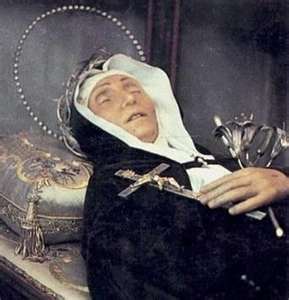 with the Lord in living for others, abandoning ourselves to his will with complete and total trust, and the union with the Church, the Bride of Christ.
with the Lord in living for others, abandoning ourselves to his will with complete and total trust, and the union with the Church, the Bride of Christ.
She invites us to participate in the suffering love of Jesus Crucified for the salvation of all sinners; she invites us to fix our gaze on Heaven, the destination of our earthly journey, where we shall live together with so many brothers and sisters the joy of full communion with God; she invites us to nourish ourselves daily with the Word of God, to warm our hearts and give our life direction. The Saint’s last words can be considered the synthesis of her passionate mystical experience: “I have found Love, Love has let himself be seen!â€. Thank you.
Tags: beauty, catholic, catholic podcast, catholic prayer, cathollc spirituality, christ in his suffering, Church, holy wounds, Jesus, mystic, mystic of the Church, mystical experiences, pope benedict, union with christ, veronica giuliani, witness
This entry was posted on Thursday, December 16th, 2010 at 6:03 am
You can follow any responses to this entry through the RSS 2.0 feed.
Mary Eberstadt’s “The Loser Letters” is not your typical apologetic book, and that’s it’s beauty. Intelligent, funny, and so very thoughtful…that’s a great 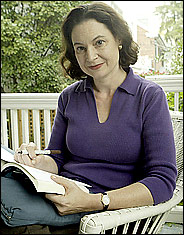 combination.  This book is a pro-religious satire of atheism, told from the point of view of a worldly and troubled twenty-something girl. Fans of C. S. Lewis will love this modern day Christian approach to the
combination.  This book is a pro-religious satire of atheism, told from the point of view of a worldly and troubled twenty-something girl. Fans of C. S. Lewis will love this modern day Christian approach to the 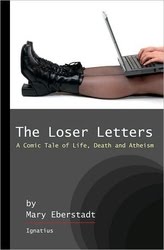 new atheist. Mary Eberstadt is fantastic…we can definitely look forward to more from her.
new atheist. Mary Eberstadt is fantastic…we can definitely look forward to more from her.
Pick up a copy of “The Loser Letters”
at ignatiuspress.com
[powerpress]
Tags: atheist, beauty, c s lewis, catholic, catholic podcast, catholic prayer, cathollc spirituality, ignatius press, love, mary eberstadt
This entry was posted on Sunday, August 29th, 2010 at 10:38 pm
You can follow any responses to this entry through the RSS 2.0 feed.


